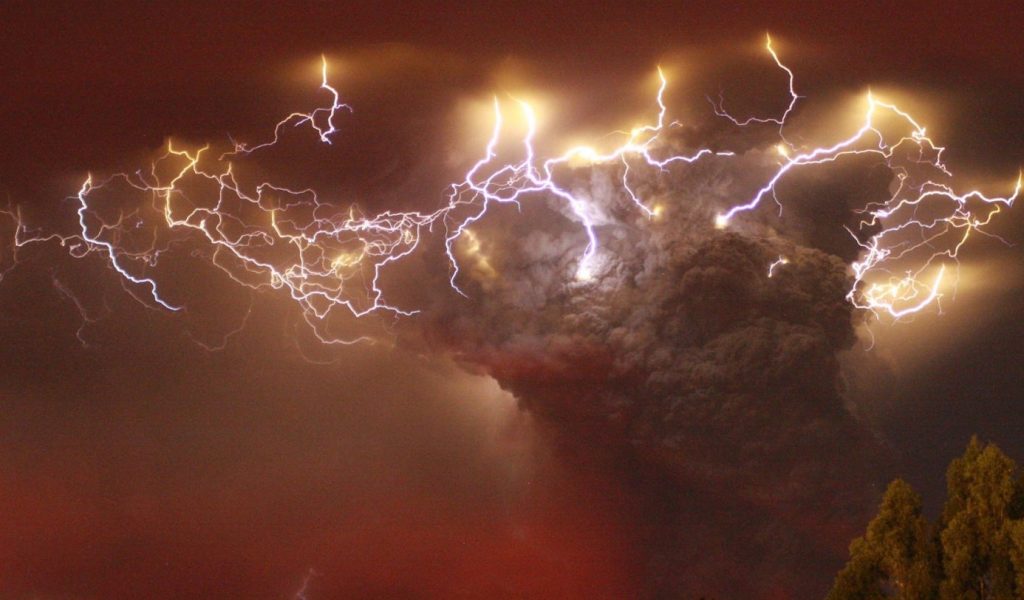
Volcanic lightning is a fascinating sight. It can be pretty impressive during a full-moon day, with the lightning bolts lighting up the sky and shooting down as far as 200 km/h. But how does it happen? How do lightning bolts form? And is there any way to stop them? Read on to learn more about lightning, its formation, and the misconceptions.
Just like online casino games, inspired by optical illusions, the incredible volcanic lightning phenomena makes champagne bubbles float to the sound of thunderstorms. This unique display of acoustic fireworks is depicted by heat from lava rising quickly through the crust generating a static charge that occasionally gets discharged as lightning.
It can be seen and heard from space, and its path can be pinpointed by radar. The discharge occurs well above the crater’s edge, where it can’t be seen most of the time. But every so often, it occurs instead within the cavity, so everyone sees it. And this has happened once recently at Sakurajima Volcano in Japan.
Misconceptions
Lightning is undeniably one of nature’s great wonders behold. This stunning natural phenomenon is constantly in the news when it strikes to cause damage or even fatalities. When it comes to volcanoes, often, there are misconceptions about the lightning that occurs within them.
The myths and mistakes concerning volcanic lightning seem as numerous as the sparks as they flicker around a volcano’s crater during an eruption. We dispel this common belief by clearly explaining what causes volcanic lightning – a phenomenon known as a “dirty thunderstorm.”
The same physics behind a regular thunderstorm allows for a volcanic eruption to produce a lighting display which typically lasts much longer than a normal thunderstorm due to the different conditions within the volcano itself.
Where does Volcanic Lightning Come from?
Typically, volcanic lightning is not formed far below the Earth. It comes from a volcanic plume and cylinder-shaped pillar of volcanic ash emitted during a volcanic eruption.
Volcanic lightning is so mysterious that no one has ever fully explained it. It’s thought to be caused by particles of ash getting an electric charge when they are blasted at high speed into the air by explosions or jets of superheated gas. The charged particles interact with each other and with volcanic plumes.
However, in 2013, scientists at Ludwig Maximillian University of Munich had a breakthrough. The beauty of their particular invention showed that the reaction was unexpected. Previous experiments were thought impossible because lightning requires such a high electric field to form.
To trigger this reaction, the scientists created a quick and sharp current surge through the gas mixture, with the effect of thousands of sparks jumping between particles in a split second: volcanic lightning.
Risks Associated with Volcanic Lightning
There’s a clear, present and long-term danger of volcanic lightning. It is not caused by thunder. Lightning is not dangerous for people or the environment because it rarely reaches the ground, evaporating before it does so. But its direct consequences may be hazardous, especially to astronauts.
Volcanic ash, boiling lava and toxic gas isn’t your average backdrop – but the unpredictable site of a 2015 eruption near Chile’s Villarrica volcano made for some compelling photos.
Even more, lightning emitted from a volcano, known as a terrestrial gamma-ray flash or TGF, is a form of natural high-energy radiation emitted from the Earth’s atmosphere during thunderstorms. It has been observed from ten volcanoes on six continents.
While lightning discharges from terrestrial gamma-ray flashes produce radiation levels that are too low to pose any health risk, scientists believe that volcanic lightning poses a threat to aeroplanes or spacecraft that get too close to a thunderstorm on a volcanic limb.
Everyday Lightning
You don’t need an actual volcano to grasp the concept of volcanic lightning. It’s all about the friction generated by charged particles. If you’ve ever rubbed a balloon on your hair or shoelaces, you’ve created static electricity. Those charged particles of electricity make up volcanic lightning.
Fact: The Volcanic Lightning concept represents a revolution in energy production by harnessing an electromagnetic field to generate electricity. Power could be pumped directly into grids with turbines embedded around the volcanic crater, powering everything from light bulbs to electric cars.
The Volcanic Lightning concept represents a revolution in energy production by harnessing an electromagnetic field to generate electricity. Power could be pumped directly into grids with turbines embedded around the volcanic crater, powering everything from light bulbs to electric cars.
Interesting, right?












Makes power in theory.
Maybe you can hook your electric car up and charge at night?
https://www.naturalnews.com/2021-09-30-red-states-nullify-federal-government-declare-health-freedom-zones.html
Mike is on target again. Good advice. Kudos!
https://www.thegatewaypundit.com/2021/09/democrat-senator-dianne-feinstein-introduces-bill-require-proof-covid-vax-negative-test-domestic-flights/
DiChiSpy Feinswine. Hypocrite, traitor, and collaborator.
Same with fake(R)/Bitch McClownel.
Sold out the American taxpayers for self enrichment.
Both sides of the aisle!
Booooooo! ?????F biden too!
https://www.thegatewaypundit.com/2021/10/australia-lost-government-launches-orwellian-selfie-check-process-home-quarantine-video/
WTF!?
Australia is making people check in via selfie. If no response in five minutes, they send the goon squad to your house.
So what happens when somebody is being murdered, robbed, or raped? Do they at least prioritize calls, and send response to people in jeopardy?
This is asinine!